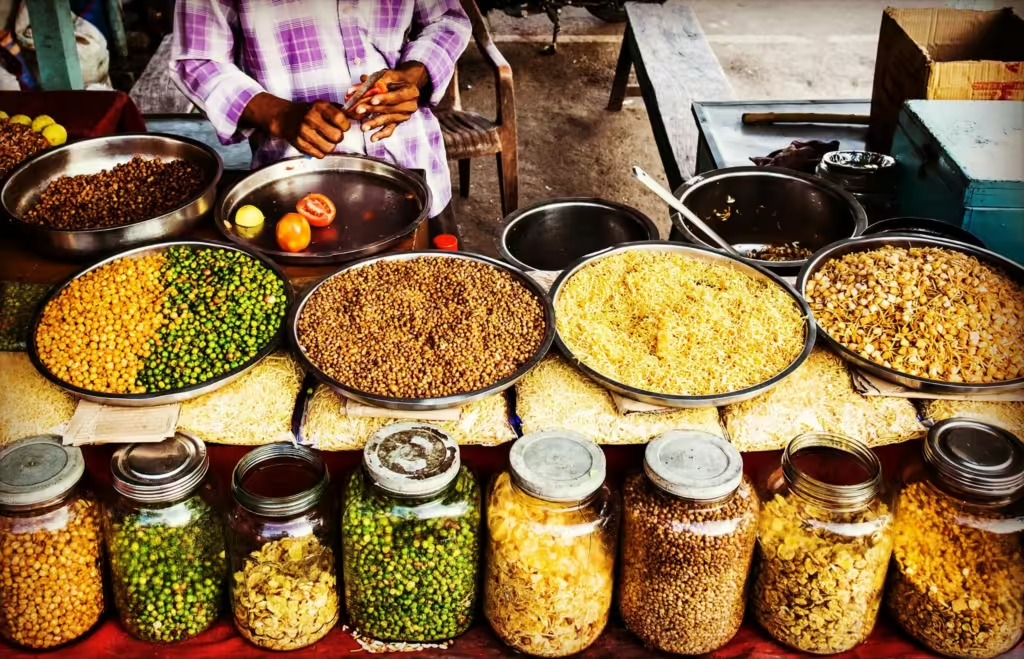
The culinary landscape is shifting toward localized cuisine, with regional flavors and dishes resonating globally. This trend stems from an intensified craving for authenticity, amplified by social media, the influence of food-centric personalities, and the accessibility of international ingredients. The once-niche domain of street food and regional specialties is now celebrated on the world stage.
The Global Appetite for Authenticity
In the early 2000s, the American gourmet market burgeoned, driven by rising incomes, the globalization of taste, and concerns surrounding health and nutrition. This growth fed a desire for culinary diversity, creating space for more niche, authentic food experiences. Consumers began to explore beyond popularized fare, delving into regional cuisines for their unique ingredients, history, and cultural narratives.
A case in point is the rise of Ethiopian cuisine in U.S. cities, a trend once limited to the adventurous but now widely embraced. Injera, a sour, spongy flatbread made from teff, and other traditional Ethiopian dishes are celebrated not only for taste but for cultural immersion, connecting diners with Ethiopian customs of shared meals and hand-eating practices. This trend reveals a deeper cultural resonance, where people seek to engage with food in a way that feels organic and rooted in history rather than standardized.
Social Media: The Great Flavor Equalizer
Platforms like Instagram, TikTok, and YouTube have democratized culinary content, allowing local dishes to go viral in ways previously unimaginable. For example, “birria tacos,” originating from Mexico, became a U.S. food truck sensation almost overnight, thanks to the visual appeal of the beef-filled, cheese-dipped tacos captured in videos with drool-worthy cheese pulls and sauce-dunking. This online visibility enables small businesses to compete with large chains, especially when influencers bring local stories and regional recipes to life.
Social media’s algorithmic power often favors aesthetic, colorful, and unique foods, meaning that local specialties like Thai “Kanom Krok” (coconut-rice pancakes) or Indian “Vada Pav” (spicy potato sandwiches) have as much, if not more, visual appeal as their global fast-food counterparts. Such visibility allows these dishes to penetrate new markets, providing exposure that would otherwise be financially unattainable for local businesses.
Fusion Cuisine 2.0: When Local Meets Global
The appetite for authenticity doesn’t necessarily exclude innovation; instead, it often leads to new, fusion-oriented dishes that blend local flavors with global culinary techniques. The evolution of the sushi burrito in North America or Korean BBQ tacos exemplifies the fusion trend—marrying flavors without sacrificing authenticity.
This fusion trend also exemplifies the adaptability of cultural foods. Take, for instance, the “bao burger” (steamed bao buns filled with burger-style meats), which emerged as an answer to East-West fusion without compromising the essence of the traditional bao. Such adaptations embody a balanced fusion, retaining essential local elements while appealing to global tastes.

From Food Trucks to Franchises
The journey of local cuisine from food trucks to international franchises is marked by both opportunities and challenges. When businesses like California’s Kogi BBQ truck gained fame for its Korean-Mexican fusion tacos, it laid the foundation for others to replicate and expand on a similar model. Yet, scaling up without diluting the unique appeal of these cuisines remains a challenge, as mass production can sometimes erode cultural essence.
To address this, brands increasingly adopt localization strategies, sourcing ingredients from local farms, training chefs in authentic techniques, and ensuring that menus stay true to their origins. For instance, the popular Thai chain “Somtum Der,” known for its Isan Thai cuisine, has successfully expanded into international markets by adapting the spice levels for local tastes while retaining authentic flavors.
The Economics of Culinary Globalization
As localized cuisine captures the global market, it drives a demand for regional ingredients, benefiting farmers and suppliers from various parts of the world. Ingredients like quinoa from Peru, Himalayan salt from Pakistan, and matcha from Japan have moved from local kitchens to international supermarket aisles, fueling local economies. This surge also prompts collaborations between international brands and local producers.

Online platforms such as Alibaba and Amazon have simplified global ingredient sourcing, bridging farmers directly to consumers. Local, organic produce now commands a premium, making it economically viable for small-scale farmers to participate in a global market. Such shifts redefine supply chains, as ingredients once confined to their regions gain global recognition and demand.
Craftsmanship Goes Global: The Digital Renaissance of Local Artisans
The global embrace of local foods extends to artisanal crafts, as the appeal of handmade, unique items grows. Platforms like Etsy have enabled artisans to market globally, whether it’s Turkish hand-crafted copper coffee pots, Japanese lacquerware, or Moroccan tajines. This digital renaissance celebrates the craftsmanship that goes into these items, ensuring that heritage techniques are preserved and appreciated.
For example, Italian pasta artisans who hand-roll each noodle or Peruvian weavers producing intricate designs for serving cloths have found new audiences beyond their local markets. This visibility revitalizes traditional craftsmanship, ensuring artisans’ cultural legacies are both celebrated and economically sustainable.
Cultural Globalization and its Implications
While globalization facilitates cross-cultural exchange, it also poses challenges. The diffusion of fast-food chains into different regions sometimes dilutes local culinary identity, fostering concerns about cultural homogenization. For instance, the rise of McDonald’s and KFC in Southeast Asia has sparked debates over health, nutrition, and the loss of indigenous food practices.
Nevertheless, this cultural exchange also promotes recreational culinary experiences, where people gain exposure to diverse cuisines and traditions. This can encourage individuals to preserve and celebrate their own food traditions or explore more diverse diets, allowing cultural appreciation to flourish alongside global culinary trends.
Glocalisation: The Harmonious Blend of Global and Local Elements
Glocalisation, the process of adapting global offerings to fit local preferences, enables multinational corporations to resonate with local tastes. For instance, McDonald’s success with its “McSpicy Paneer” in India exemplifies the power of glocalisation, as the global brand adjusted its menu to reflect cultural and dietary preferences.
Other companies have embraced glocalisation by employing regional marketing strategies that respect cultural practices, such as refraining from selling beef in predominantly Hindu areas or pork in Muslim-majority regions. This localization makes global brands more palatable, catering to the values and tastes of diverse consumer bases.
The Evolution of Traditional Dishes
Globalization’s influence has also prompted a transformation of traditional dishes, shifting from static heritage symbols to dynamic cultural expressions. The transformation of foods like Mexico’s mole, a complex sauce with regional variations, showcases the adaptive nature of traditional foods in contemporary contexts.
Economic considerations and access to new ingredients are also shaping traditional foods. For example, “Pho” in Vietnam has evolved, with chefs experimenting by adding truffle oil or vegan ingredients for global audiences. Such changes reflect a blend of preservation and innovation, maintaining cultural essence while adapting to modern palates.
Balancing Global Markets and Local Traditions
The crux of today’s culinary globalization lies in balancing market demands with cultural integrity. By fostering a nuanced appreciation for the cultural significance behind food, businesses can create a more equitable system, ensuring local traditions aren’t overshadowed by global appetites. Festivals celebrating street foods, for example, help raise awareness and promote regional culinary diversity.
Countries and communities now use geographical indications (GIs) to safeguard their unique foods, ensuring products like Champagne or Prosciutto di Parma maintain their cultural and geographical authenticity. These protections not only secure economic benefits but reinforce cultural pride and heritage.

Marketing of Global vs. Traditional Cuisines
The battle between global and traditional food marketing is stark. Global brands leverage mass media, online advertising, and digital strategies, while traditional cuisines often rely on word-of-mouth and heritage preservation. However, as more foodies look to “authentic” and “handmade” labels, traditional cuisines gain new ground through personal stories and immersive dining experiences.
For instance, restaurants that market their unique family-owned recipes, or chefs who openly share the cultural stories behind their dishes, add layers of narrative that mass-produced foods often lack. These narratives foster a deeper connection with consumers, turning meals into cultural experiences.
Perception of New vs. Old and Healthy vs. Unhealthy
Globalization’s exposure has redefined perceptions of traditional versus modern food and what constitutes healthy eating. Traditional diets once dismissed as outdated are now appreciated for their nutritional wisdom, such as the balanced grains, vegetables, and lean proteins in Mediterranean cuisine. This reassessment has spurred renewed interest in whole foods, fermented dishes, and heritage grains, blending old-world wisdom with modern health consciousness.
In conclusion, the surge of localized cuisine represents an exciting convergence of culture, economy, and social influence. While global exposure can present challenges, it also fosters appreciation for the diversity, craft, and history embodied in local foods. As this trend evolves, it offers a platform for cultural exchange and growth, celebrating the local flavors that enrich the world’s culinary heritage.


Leave a Reply